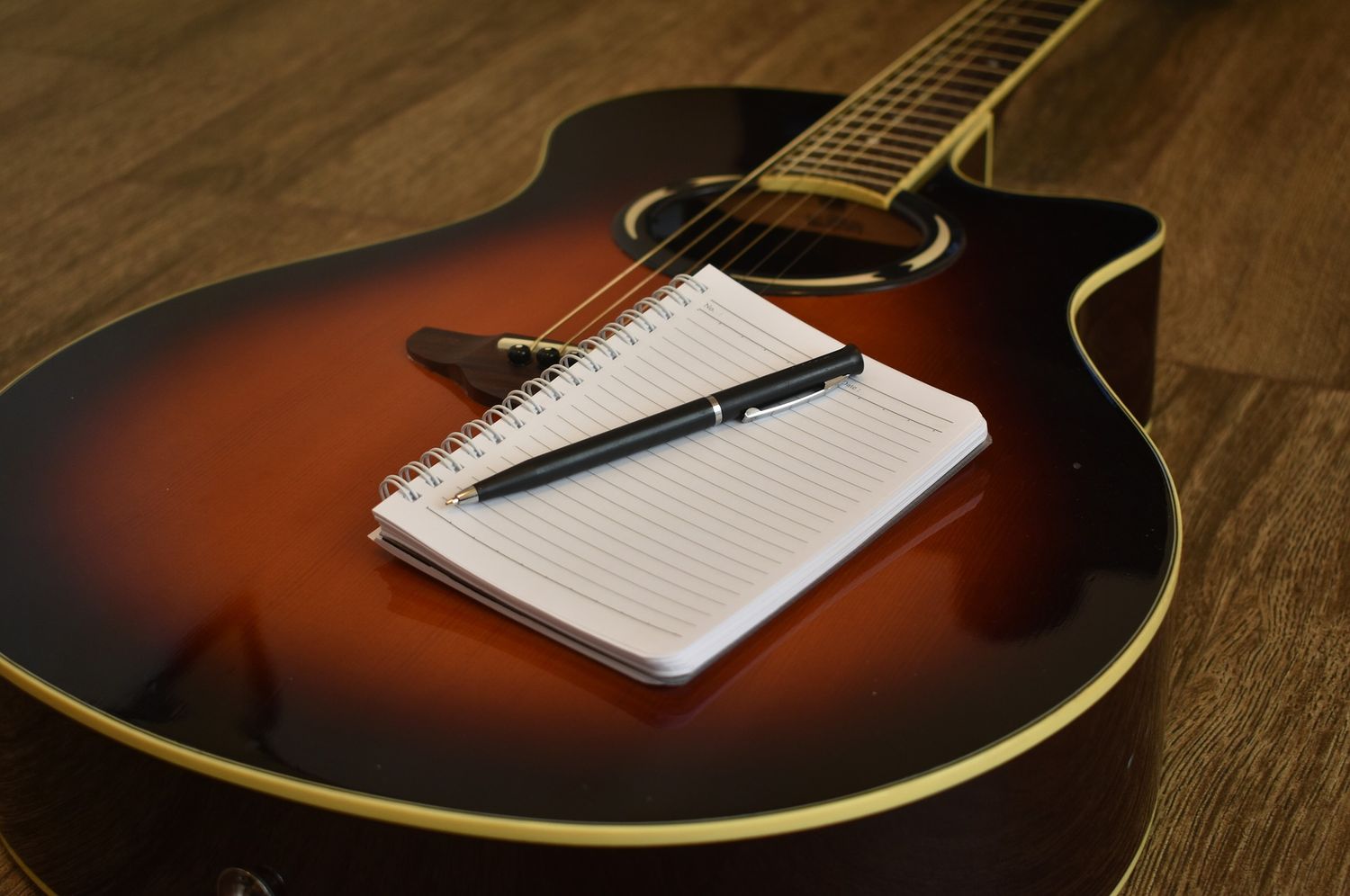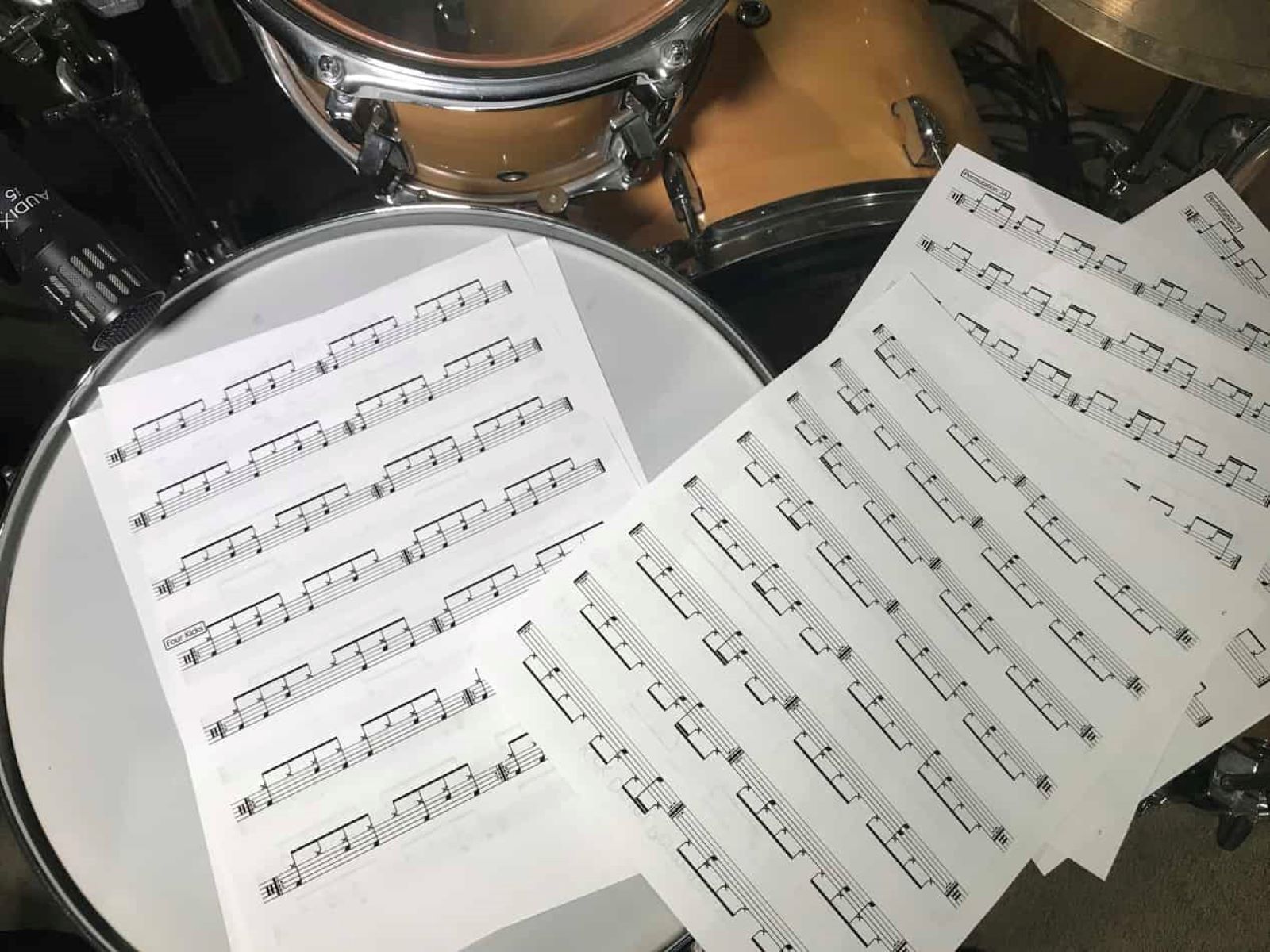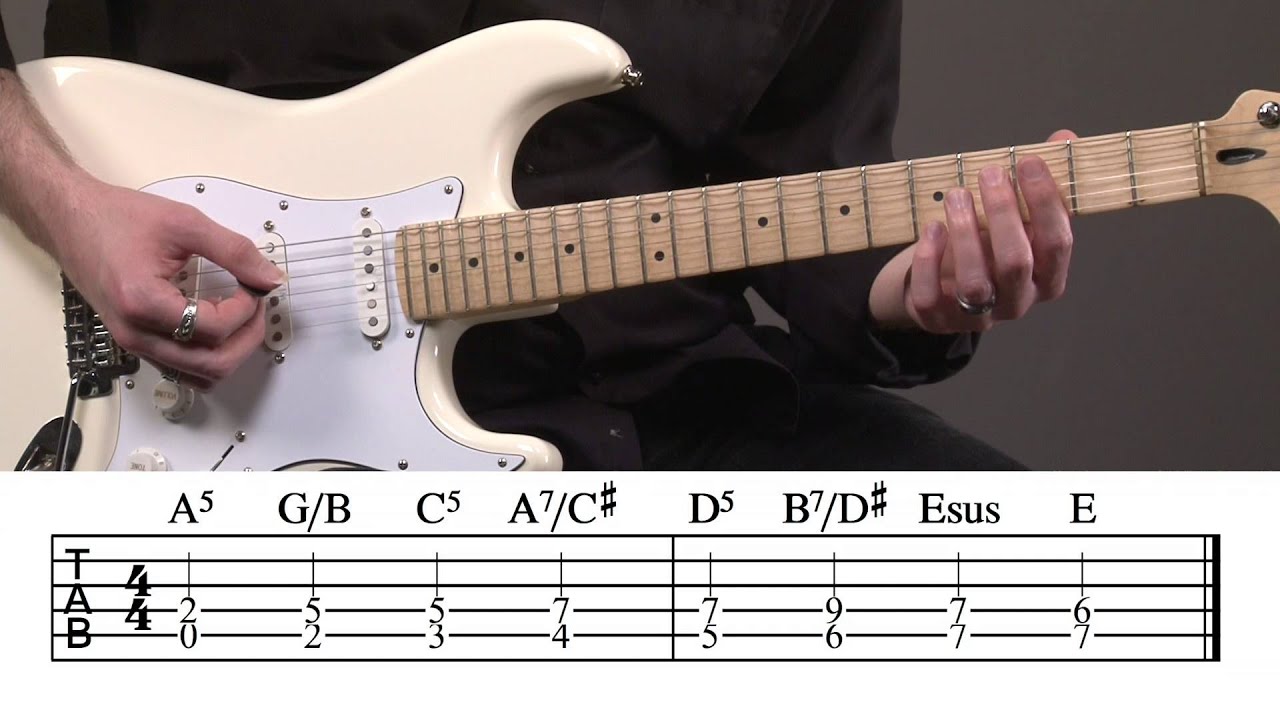Home>Production & Technology>Acoustic>How To Write Acoustic Songs


Acoustic
How To Write Acoustic Songs
Published: March 11, 2024
Learn how to write captivating acoustic songs with our expert tips and techniques. Discover the secrets to creating beautiful melodies and heartfelt lyrics. Master the art of acoustic songwriting today!
(Many of the links in this article redirect to a specific reviewed product. Your purchase of these products through affiliate links helps to generate commission for AudioLover.com, at no extra cost. Learn more)
Table of Contents
Choosing the Right Chords
When it comes to writing acoustic songs, selecting the right chords is crucial in setting the mood and conveying the intended emotions. The chords serve as the foundation upon which the entire song is built, influencing its overall sound and resonance. Here are some key considerations to keep in mind when choosing the right chords for your acoustic composition:
-
Understand the Emotion: Before diving into chord selection, it's essential to have a clear understanding of the emotional tone you want to convey. Whether it's a sense of longing, joy, melancholy, or hope, each emotion can be effectively expressed through specific chord progressions. For instance, the use of minor chords often evokes a somber or introspective mood, while major chords tend to convey a brighter and more uplifting feel.
-
Experiment with Progressions: Don't be afraid to experiment with different chord progressions to find the perfect fit for your song. Traditional progressions like the I-IV-V or the vi-IV-I-V can provide a solid framework, but don't hesitate to incorporate unexpected or unconventional chord changes to add depth and intrigue to your composition.
-
Consider Open Chords and Inversions: Open chords, with their rich and resonant sound, are a staple in acoustic songwriting. They offer a warm and inviting tone that can enhance the emotional impact of your music. Additionally, exploring chord inversions can add a unique flavor to your compositions, creating a sense of movement and sophistication within the harmonic structure.
-
Pay Attention to Transitions: Smooth transitions between chords are essential for maintaining the flow and coherence of your song. Practice transitioning between chords seamlessly to ensure that the progression feels natural and effortless. This attention to detail can elevate the overall quality of your composition and captivate the listener.
-
Balance Familiarity and Innovation: While it's important to incorporate familiar and comforting chord progressions, don't shy away from infusing your compositions with innovative and unexpected chord choices. Striking a balance between the familiar and the novel can result in a captivating and memorable musical experience for your audience.
By carefully considering these factors and allowing your creativity to flourish, you can effectively choose the right chords to breathe life into your acoustic songs. Remember, the chords you select will serve as the emotional backbone of your composition, shaping the listener's experience and leaving a lasting impression.
Crafting Meaningful Lyrics
Crafting meaningful lyrics is a fundamental aspect of writing acoustic songs, as it allows songwriters to convey their emotions, experiences, and stories in a compelling and relatable manner. The power of well-crafted lyrics lies in their ability to resonate with listeners on a profound level, evoking empathy, introspection, and a sense of connection. Here are essential considerations for crafting lyrics that deeply resonate with your audience:
-
Embrace Authenticity: Authenticity forms the bedrock of meaningful lyrics. Drawing from personal experiences, emotions, and observations can infuse your lyrics with genuine sincerity and depth. By tapping into your own narrative, you can create a powerful emotional resonance that transcends the boundaries of individual experiences and speaks to universal themes.
-
Harness the Power of Imagery: Vivid and evocative imagery has the ability to transport listeners into the heart of your narrative. By employing descriptive language and sensory details, you can paint a rich tapestry of emotions and experiences, allowing your audience to visualize and empathize with the essence of your lyrics.
-
Emotional Honesty: Embracing emotional honesty in your lyrics can foster a profound connection with your audience. Whether it's vulnerability, heartache, joy, or resilience, expressing genuine emotions in your lyrics can create an emotional bridge between the songwriter and the listener, fostering a sense of shared humanity.
-
Focus on Universal Themes: While personal experiences are a potent source of inspiration, weaving universal themes into your lyrics can amplify their impact. Themes such as love, loss, hope, and perseverance resonate with a broad audience, transcending individual circumstances and fostering a collective emotional experience.
-
Embrace Metaphors and Symbolism: Metaphors and symbolism can add layers of depth and complexity to your lyrics, inviting listeners to interpret and connect with the underlying meanings. By infusing your lyrics with symbolic imagery, you can create a multi-dimensional narrative that invites introspection and contemplation.
-
Honor the Music: Crafting lyrics that complement and enhance the musical composition is essential. Pay attention to the rhythm, cadence, and phrasing of your lyrics to ensure they seamlessly intertwine with the melody, creating a harmonious union of words and music.
By embracing these principles, songwriters can craft lyrics that resonate deeply with their audience, fostering an emotional connection that transcends the boundaries of language and culture. Meaningful lyrics have the power to evoke empathy, introspection, and a profound sense of shared humanity, making them an indispensable element of compelling acoustic songs.
Creating Catchy Melodies
Crafting catchy melodies is a cornerstone of writing memorable acoustic songs, as it forms the melodic tapestry that captivates listeners and leaves a lasting imprint. A catchy melody has the power to linger in the minds of the audience, evoking emotions and creating a sense of resonance long after the song has ended. Here are essential strategies for creating melodies that are not only captivating but also deeply impactful:
Embrace Musical Phrasing and Rhythmic Variation
The art of crafting a catchy melody lies in the skillful use of musical phrasing and rhythmic variation. By incorporating varied note durations, rests, and syncopation, songwriters can infuse their melodies with a sense of dynamism and unpredictability. This rhythmic diversity adds an element of surprise and intrigue, keeping the listener engaged and eager to discover the unfolding musical journey.
Explore Intervallic Movement and Contour
The intervallic movement and contour of a melody play a pivotal role in shaping its emotional impact and memorability. Experimenting with leaps, steps, and arpeggios can add a sense of fluidity and expressiveness to the melody, creating moments of tension and release that resonate deeply with the audience. Additionally, crafting a compelling contour, with rises and falls that mirror the emotional nuances of the lyrics, can elevate the melodic experience to new heights.
Harmonic Resonance and Resolution
Harmonic resonance and resolution are essential elements in creating melodies that linger in the hearts of listeners. By aligning the melodic phrases with harmonically resonant chord progressions, songwriters can evoke a sense of emotional fulfillment and completeness within the melody. Strategic employment of unresolved tensions and resolutions can add a layer of emotional depth, leaving a lasting imprint on the listener's psyche.
Infuse Melodic Hooks and Repetition
Incorporating melodic hooks and repetition is a powerful technique for embedding the melody in the listener's memory. A well-crafted hook serves as a musical motif that anchors the song, providing a familiar and memorable element that resonates with the audience. Strategic repetition of key melodic phrases reinforces the catchiness of the melody, creating a sense of familiarity and singularity that lingers long after the song has ended.
Seamless Integration with Lyrics and Chords
A catchy melody seamlessly integrates with the lyrics and chords, creating a cohesive and harmonious musical tapestry. The melody should complement the emotional nuances of the lyrics, enhancing their impact and creating a unified expression of the song's narrative. Additionally, harmonically aligning the melody with the underlying chords creates a sense of musical cohesion, elevating the overall melodic experience.
By embracing these strategies, songwriters can craft melodies that not only captivate the audience but also resonate deeply on an emotional level. Catchy melodies have the power to transcend the boundaries of language and culture, leaving an indelible mark on the hearts and minds of listeners.
Incorporating Fingerpicking Techniques
Incorporating fingerpicking techniques is a hallmark of acoustic songwriting, adding a layer of intricacy and nuance to the musical composition. Fingerpicking, also known as fingerstyle guitar, allows songwriters to create rich, dynamic textures and explore a diverse range of tonal possibilities. Whether you're a seasoned guitarist or just beginning to delve into the world of fingerpicking, mastering these techniques can significantly enhance the depth and expressiveness of your acoustic songs.
Embrace Fingerstyle Patterns and Arpeggios
Fingerstyle patterns and arpeggios form the foundation of fingerpicking techniques, offering a versatile toolkit for crafting compelling acoustic arrangements. By mastering various fingerstyle patterns, such as the Travis picking or the alternating bass technique, songwriters can create intricate rhythmic textures and melodic interplay within their compositions. Additionally, exploring arpeggios across different chord voicings can add a sense of harmonic richness and complexity to the music, elevating the overall sonic landscape.
Explore Hybrid Picking and Finger Independence
Hybrid picking, which combines the use of a pick and fingers, opens up a world of possibilities for acoustic guitarists. This technique allows for seamless transitions between strummed chords and delicate fingerpicked passages, adding a dynamic range of expression to the music. Furthermore, developing finger independence is essential for executing intricate fingerstyle passages with precision and fluidity. By honing finger independence, songwriters can navigate complex fingerpicking patterns with ease, unlocking a myriad of creative possibilities.
Utilize Percussive Elements and Harmonics
Incorporating percussive elements and harmonics into fingerstyle playing can infuse acoustic songs with rhythmic vitality and ethereal textures. Percussive techniques, such as muted strums, slaps, and taps, add a rhythmic pulse to the music, creating a sense of groove and momentum. Additionally, integrating natural and artificial harmonics within fingerpicked passages can introduce shimmering overtones and celestial resonance, adding a touch of magic to the sonic tapestry.
Experiment with Thumb-Over Chord Voicings
Exploring thumb-over chord voicings expands the harmonic palette available to fingerstyle guitarists, enabling the creation of lush and resonant chord progressions. By utilizing the thumb to fret bass notes and lower chord tones, songwriters can craft evocative chord voicings that resonate deeply within the music. This approach adds a sense of depth and warmth to the harmonic structure, enriching the overall tonal quality of the acoustic composition.
Integrate Fingerstyle Techniques with Melodic Phrasing
Integrating fingerstyle techniques with melodic phrasing allows for the seamless intertwining of melody and accompaniment, creating a cohesive and expressive musical narrative. By weaving melodic motifs and embellishments into fingerpicked passages, songwriters can elevate the melodic content of their compositions, adding a layer of emotive depth and storytelling. This integration of fingerstyle techniques with melodic phrasing fosters a sense of musical unity, where the guitar becomes a vehicle for lyrical expression and evocative storytelling.
Incorporating fingerpicking techniques into acoustic songwriting opens up a world of creative possibilities, allowing songwriters to craft compelling and evocative musical compositions. Whether it's the delicate interplay of fingerstyle patterns, the rhythmic vitality of percussive elements, or the harmonic richness of thumb-over chord voicings, mastering these techniques can elevate the emotional resonance and sonic allure of acoustic songs. By embracing the art of fingerpicking, songwriters can weave intricate tapestries of sound that captivate and inspire listeners, creating a profound and enduring musical experience.
Utilizing Dynamic Changes
Utilizing dynamic changes is a pivotal aspect of crafting compelling acoustic songs that resonate with listeners on an emotional level. Dynamic changes refer to the variations in volume, intensity, and expression within a musical composition, creating a sense of ebb and flow that captivates the audience and enhances the overall emotional impact of the music.
One of the fundamental elements of dynamic changes is the strategic use of crescendos and decrescendos. These gradual increases and decreases in volume and intensity serve to build tension and release within the music, creating a sense of narrative arc that mirrors the emotional contours of the lyrics and melodies. By skillfully incorporating crescendos, songwriters can heighten the emotional stakes of the composition, leading to climactic moments that resonate deeply with the audience. Conversely, well-executed decrescendos can evoke a sense of intimacy and vulnerability, drawing the listener into the heart of the musical narrative.
In addition to crescendos and decrescendos, the strategic use of musical articulations such as staccato, legato, and marcato can add a layer of expressiveness and nuance to acoustic compositions. These articulations influence the attack, duration, and release of individual notes, shaping the rhythmic and textural qualities of the music. By incorporating staccato passages, songwriters can infuse the music with a sense of urgency and punctuated energy, creating moments of rhythmic tension that propel the composition forward. On the other hand, embracing legato phrasing can imbue the music with a fluid and seamless quality, fostering a sense of lyrical grace and continuity within the melodic lines.
Furthermore, the strategic use of dynamic changes can be heightened through the exploration of tonal textures and timbral variations. By leveraging the full sonic spectrum of the acoustic guitar, from delicate fingerpicked passages to bold strummed chords, songwriters can create a diverse palette of tonal colors that enrich the musical landscape. This interplay of tonal textures allows for moments of sonic contrast and juxtaposition, adding depth and dimension to the composition.
Ultimately, the art of utilizing dynamic changes in acoustic songwriting lies in the ability to sculpt a musical journey that ebbs and flows with emotional resonance. By skillfully navigating the terrain of volume, intensity, and articulation, songwriters can craft acoustic compositions that unfold like compelling narratives, drawing the audience into a world of evocative storytelling and profound emotional connection.
Recording and Mixing Tips
Recording and mixing are pivotal stages in the production of acoustic songs, shaping the sonic landscape and ensuring that the emotional essence of the music is faithfully captured and conveyed to the audience. Here are essential tips to elevate the recording and mixing process, allowing songwriters to achieve a polished and evocative sonic presentation.
Embrace the Acoustic Environment
When recording acoustic songs, the environment plays a crucial role in capturing the natural resonance and ambience of the music. Choose a recording space that complements the acoustic qualities of the instruments, whether it's the warmth of a living room or the spaciousness of a professional studio. Embracing the acoustic environment allows for the organic integration of natural reverberations and tonal nuances, enriching the sonic character of the recordings.
Strategic Microphone Placement
The placement of microphones is a critical factor in capturing the nuances and subtleties of acoustic instruments. Experiment with different microphone positions to find the optimal balance between capturing the instrument's natural tonal characteristics and minimizing unwanted ambient noise. Close-miking techniques can highlight the intimate details of the instruments, while room miking can capture the immersive ambience of the recording space.
Harness the Power of Layering
Layering multiple takes of acoustic instruments can add depth and richness to the sonic tapestry. By recording multiple tracks and layering them in the mix, songwriters can create a sense of sonic depth and dimension, enhancing the overall texture and resonance of the music. Additionally, layering allows for meticulous attention to detail, ensuring that every nuance of the performance is captured and showcased.
Precision in Mixing
During the mixing process, precision is key to achieving a balanced and cohesive sonic presentation. Pay careful attention to the EQ, compression, and spatial positioning of each instrument within the mix. By delicately sculpting the tonal characteristics and dynamic range of individual tracks, songwriters can create a harmonious blend where each element contributes to the overarching sonic narrative.
Embrace Natural Dynamics
Preserving the natural dynamics of acoustic instruments is essential in maintaining the authenticity and emotional impact of the music. Avoid excessive compression or processing that may compromise the organic expressiveness of the performances. Embracing the natural dynamics allows for the subtle nuances and emotive qualities of the instruments to shine through, creating a captivating and immersive listening experience.
Attention to Detail
In the mixing stage, meticulous attention to detail can elevate the sonic quality of the recordings. Fine-tune the spatial positioning of instruments, address any frequency masking issues, and ensure that the overall mix retains clarity and transparency. Additionally, pay attention to the balance between the lead vocals and accompanying instruments, creating a cohesive sonic landscape where every element contributes to the emotional resonance of the music.
By embracing these recording and mixing tips, songwriters can elevate the sonic quality of their acoustic songs, ensuring that the emotional essence of the music is faithfully preserved and conveyed to the audience. The recording and mixing process serves as the final canvas upon which the intricate tapestry of acoustic compositions is woven, capturing the raw beauty and emotive power of the music.











